Would you like to make this site your homepage? It's fast and easy...
Yes, Please make this my home page!
MAMMALS
Mammals are members of class Mammalia air-breathing vertebrate animals characterised by the
possession of endothermy,hair,three middle ear bones and mammary glands functional in mothers with
young.
Most mammals also possess sweat glands and specialised teeth.
The largest group of mammals,the placentals,have a placenta which feeds the offspring during
gestation.
The mammalian brain with its characteristic neocortex,regulates endothermic and circulatory
systems,the latter featuring red blood cells lacking nuclei and a large four-chambered heart
maintaining the very high metabolism rate they have.
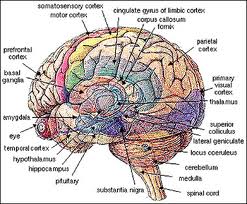
Most mammals,including the six most species-rich orders,belong to the placental group.
The three largest orders,in descending order,are Rodentia (mice,rats,porcupines,beavers,capybaras
and other gnawing mammals),
Chiroptera (bats)
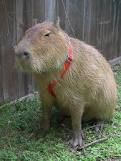 and Soricomorpha (shrews,moles and solenodons).
The next three largest orders,depending on the classification scheme used,are theprimates to which
the human species belongs,the Cetartiodactyla (including theeven-toed hoofed mammals and the whales)
and Soricomorpha (shrews,moles and solenodons).
The next three largest orders,depending on the classification scheme used,are theprimates to which
the human species belongs,the Cetartiodactyla (including theeven-toed hoofed mammals and the whales)
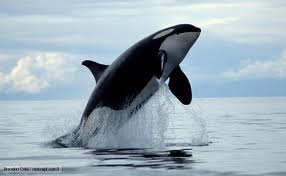 and the Carnivora (dogs,cats,weasels,bears,seals and their relatives).
The early synapsid mammalian ancestors were sphenacodont pelycosaurs,a group that also included
Dimetrodon.
At the end of the Carboniferous period,this group diverged from the sauropsid line that led to
today's reptiles and birds.
Preceded by many diverse groups of non-mammalian synapsids (sometimes referred to as mammal-like
reptiles),the first mammals appeared in the early Mesozoic era.
The modern mammalian orders arose in the Paleogene and Neogene periods of the Cenozoic era.
and the Carnivora (dogs,cats,weasels,bears,seals and their relatives).
The early synapsid mammalian ancestors were sphenacodont pelycosaurs,a group that also included
Dimetrodon.
At the end of the Carboniferous period,this group diverged from the sauropsid line that led to
today's reptiles and birds.
Preceded by many diverse groups of non-mammalian synapsids (sometimes referred to as mammal-like
reptiles),the first mammals appeared in the early Mesozoic era.
The modern mammalian orders arose in the Paleogene and Neogene periods of the Cenozoic era.
VARYING DEFINITIONS ,VARYING DATES
In an influential 1988 paper,Timothy Rowe defined Mammalia phylogenetically as the crown group
mammals,the clade consisting of the most recent common ancestor of living monotremes (echidnas and
platypuses) and therian mammals (marsupials and placentals) and all descendants of that
ancestor.
A broader phylogenetic definition was provided in a 2004 book by Kielan-Jaworowska,Cifelli,and
Luo who defined Mammalia as the clade originating with the most recent common ancestor,not only of
the monotremes and the therians but also of Sinoconodon, the morganucodonts and the docodonts.
DISTINGUISHING FEATURES
Living mammal species can be identified by the presence of sweat glands including those that are
specialized to produce milk.>
Jaw joint:
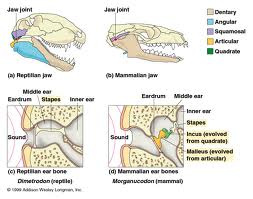 Middle ear:
Middle ear:
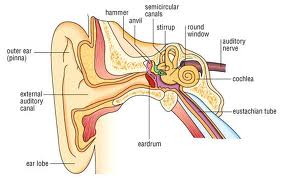 Sound is carried from the eardrum by a chain of three bones,the malleus,the incus and the
stapes.
Ancestrally,the malleus and the incus are derived from the articular and the quadrate bones that
constituted the jaw joint of early therapsids.
Tooth replacement:
Sound is carried from the eardrum by a chain of three bones,the malleus,the incus and the
stapes.
Ancestrally,the malleus and the incus are derived from the articular and the quadrate bones that
constituted the jaw joint of early therapsids.
Tooth replacement:
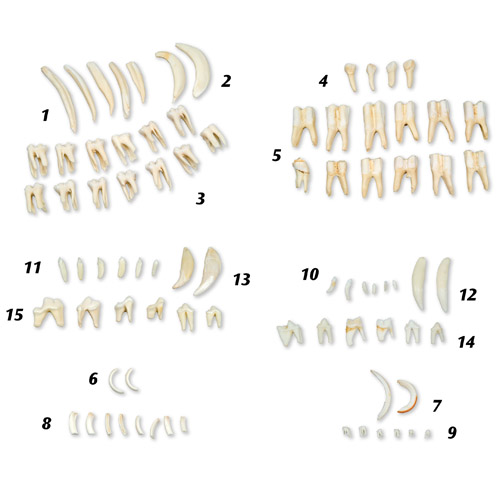 Teeth are replaced once or (as in toothed whales and murid rodents) not at all,rather than being
replaced continually throughout life.
Prismatic enamel:
The enamel coating on the surface of a tooth consists of prisms,solid,rod-like structures
extending from thedentin to the tooth's surface.
Teeth are replaced once or (as in toothed whales and murid rodents) not at all,rather than being
replaced continually throughout life.
Prismatic enamel:
The enamel coating on the surface of a tooth consists of prisms,solid,rod-like structures
extending from thedentin to the tooth's surface.
CLASSIFICATION
George Gaylord Simpson's "Principles of Classification and a Classification of Mammals"
(AMNH Bulletin v. 85,1945) was the original source for the taxonomy listed here.
Simpson laid out a systematics of mammal origins and relationships that was universally taught
until the end of the 20th century.
Since Simpson's classification, the paleontological record has been recalibrated and the
intervening years have seen much debate and progress concerning the theoretical underpinnings of
systematization itself,partly through the new concept of cladistics.
Though field work gradually made Simpson's classification outdated,it remained the closest thing
to an official classification of mammals.
Class Mammalia
Subclass Prototheria:
monotremes:
echidnas and the platypus
Subclass Theriiformes:
live-bearing mammals and their prehistoric relatives
Infraclass †Allotheria:
multituberculates
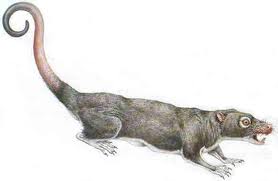 Infraclass †Triconodonta:
triconodonts
Infraclass †Triconodonta:
triconodonts
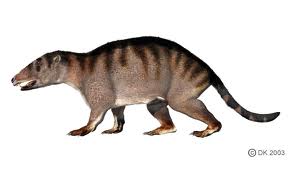 Infraclass Holotheria:
modern live-bearing mammals and their prehistoric relatives
Supercohort Theria:
live-bearing mammals
Cohort Marsupialia:
marsupials
Infraclass Holotheria:
modern live-bearing mammals and their prehistoric relatives
Supercohort Theria:
live-bearing mammals
Cohort Marsupialia:
marsupials
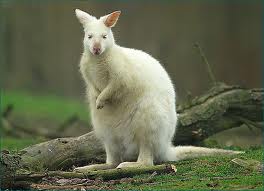 Magnorder Australidelphia:
Australian marsupials and the monito del monte
Magnorder Ameridelphia:
New World marsupials
Cohort Placentalia:
placentals
Magnorder Australidelphia:
Australian marsupials and the monito del monte
Magnorder Ameridelphia:
New World marsupials
Cohort Placentalia:
placentals
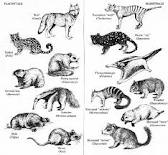 Magnorder Xenarthra:
xenarthrans
Magnorder Xenarthra:
xenarthrans
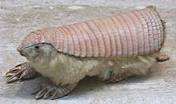 Magnorder Epitheria:
epitheres
Grandorder Anagalida:
lagomorphs,rodents and elephant shrews
Grandorder Ferae:
carnivorans,pangolins,†creodonts and relatives
Grandorder Lipotyphla:
insectivorans
Magnorder Epitheria:
epitheres
Grandorder Anagalida:
lagomorphs,rodents and elephant shrews
Grandorder Ferae:
carnivorans,pangolins,†creodonts and relatives
Grandorder Lipotyphla:
insectivorans
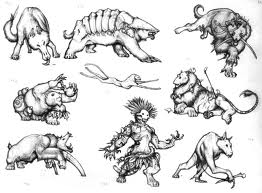 Grandorder Archonta:
bats,primates,colugos and treeshrews
Grandorder Ungulata:
ungulates
Grandorder Archonta:
bats,primates,colugos and treeshrews
Grandorder Ungulata:
ungulates
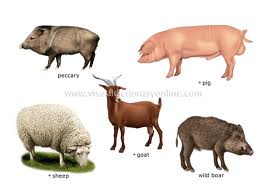 Order Tubulidentata incertae sedis:
aardvark
Order Tubulidentata incertae sedis:
aardvark
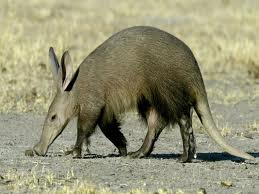 Mirorder Eparctocyona:
†condylarths,whales and artiodactyls (even-toed ungulates)
Mirorder †Meridiungulata:
South American ungulates
Mirorder Altungulata:
perissodactyls (odd-toed ungulates),elephants,manatees and hyraxes
Mirorder Eparctocyona:
†condylarths,whales and artiodactyls (even-toed ungulates)
Mirorder †Meridiungulata:
South American ungulates
Mirorder Altungulata:
perissodactyls (odd-toed ungulates),elephants,manatees and hyraxes
MOLECULAR CLASSIFICATION OF PLACENTALS
Molecular studies based on DNA analysis have suggested new relationships among mammal families
over the last few years.
Most of these findings have been independently validated by retrotransposon presence/absence
data.
These molecular results are still controversial because they are not reflected by morphological
data and therefore not accepted by many systematists. Further,there is some indication from
retrotransposon presence/absence data that the traditional Epitheria hypothesis,suggesting
Xenarthra as the first divergence,might be true.
With the old order Insectivora shown to be polyphylectic and more properly subdivided (as
Afrosoricida,Erinaceomorpha and Soricomorpha),the following classification for placental mammals
contains 21 orders:
Clade Atlantogenata
Group I
:
Afrotheria
Clade Afroinsectiphilia
Order Macroscelidea:
elephant shrews (Africa)
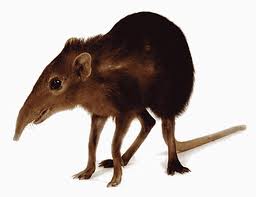 Order Afrosoricida:
tenrecs and golden moles (Africa)
Order Afrosoricida:
tenrecs and golden moles (Africa)
 Order Tubulidentata:
aardvark (Africa south of the Sahara)
Order Tubulidentata:
aardvark (Africa south of the Sahara)
 Clade Paenungulata
Order Hyracoidea:
hyraxes or dassies (Africa,Arabia)
Clade Paenungulata
Order Hyracoidea:
hyraxes or dassies (Africa,Arabia)
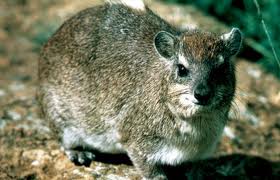 Order Proboscidea:
elephants (Africa,Southeast Asia)
Order Proboscidea:
elephants (Africa,Southeast Asia)
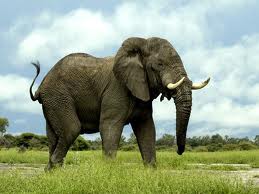 Order Sirenia:
dugong and manatees (cosmopolitan tropical)
Order Sirenia:
dugong and manatees (cosmopolitan tropical)
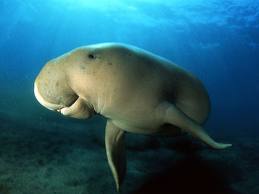
Group II
:
Xenarthra
Order Pilosa:
sloths and anteaters (neotropical)
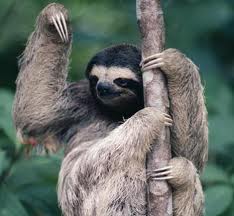 Order Cingulata:
armadillos (Americas)
Clade Boreoeutheria
Order Cingulata:
armadillos (Americas)
Clade Boreoeutheria
Group III
:
Euarchontoglires (Supraprimates)
Superorder Euarchonta
Order Scandentia:
treeshrews (Southeast Asia)
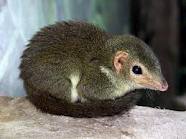 Order Dermoptera:
flying lemurs or colugos (Southeast Asia)
Order Dermoptera:
flying lemurs or colugos (Southeast Asia)
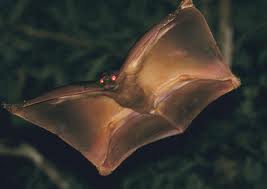 Order Primates:
lemurs,bushbabies,monkeys,apes,human (cosmopolitan)
Order Primates:
lemurs,bushbabies,monkeys,apes,human (cosmopolitan)
 Superorder Glires
Order Lagomorpha:
pikas,rabbits,hares (Eurasia,Africa,Americas)
Superorder Glires
Order Lagomorpha:
pikas,rabbits,hares (Eurasia,Africa,Americas)
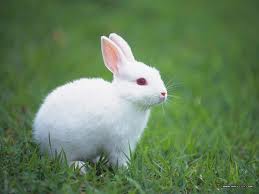 Order Rodentia:
rodents (cosmopolitan)
Order Rodentia:
rodents (cosmopolitan)
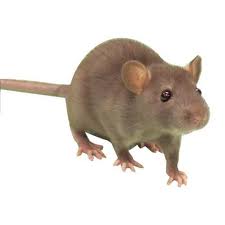
Group IV
:
Laurasiatheria
Order Erinaceomorpha:
hedgehogs
Order Soricomorpha:
moles,shrews,solenodons
Clade Ferungulata
Clade Cetartiodactyla
Order Cetacea:
whales,dolphins and porpoises
 Order Artiodactyla:
even-toed ungulates,including pigs,hippopotamus,camels,giraffe,deer,antelope,cattle,sheep,goats
Clade Pegasoferae
Order Chiroptera:
bats (cosmopolitan)
Clade Zooamata
Order Perissodactyla:
odd-toed ungulates,including horses,donkeys,zebras,tapirs and rhinoceroses
Order Artiodactyla:
even-toed ungulates,including pigs,hippopotamus,camels,giraffe,deer,antelope,cattle,sheep,goats
Clade Pegasoferae
Order Chiroptera:
bats (cosmopolitan)
Clade Zooamata
Order Perissodactyla:
odd-toed ungulates,including horses,donkeys,zebras,tapirs and rhinoceroses
 Clade Ferae
Order Pholidota:
pangolins or scaly anteaters (Africa,South Asia)
Order Carnivora:
carnivores (cosmopolitan),including cats and dogs
Clade Ferae
Order Pholidota:
pangolins or scaly anteaters (Africa,South Asia)
Order Carnivora:
carnivores (cosmopolitan),including cats and dogs
SKELETAL SYSTEM
The majority of mammals have seven cervical vertebrae (bones in the neck),including bats,giraffes,
whales and humans.
The exceptions are the manatee and the two-toed sloth,which have only six cervical vertebrae and
the three-toed sloth with nine cervical vertebrae.
RESPIRATORY SYSTEM
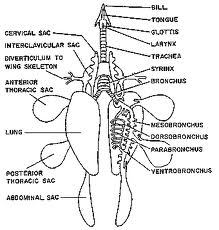 The lungs of mammals have a spongy texture and are honeycombed with epithelium having a much
larger surface area in total than the outer surface area of the lung itself.
The lungs of humans are typical of this type of lung.
This type of lung is known as a bellows lung as it resembles a blacksmith's bellows.
Mammals take oxygen into their lungs and discard carbon dioxide.
The lungs of mammals have a spongy texture and are honeycombed with epithelium having a much
larger surface area in total than the outer surface area of the lung itself.
The lungs of humans are typical of this type of lung.
This type of lung is known as a bellows lung as it resembles a blacksmith's bellows.
Mammals take oxygen into their lungs and discard carbon dioxide.
NERVOUS SYSTEM
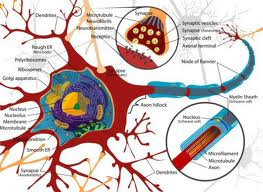 All mammalian brains possess a neocortex,a brain region unique to mammals.
Placental mammals have a corpus callosum, unlike monotremes and marsupials.
The size and number of cortical areas (Brodmann's areas) is least in monotremes (about 8-10) and
most in placentals (up to 50).
All mammalian brains possess a neocortex,a brain region unique to mammals.
Placental mammals have a corpus callosum, unlike monotremes and marsupials.
The size and number of cortical areas (Brodmann's areas) is least in monotremes (about 8-10) and
most in placentals (up to 50).
INTEGUMENTARY SYSTEM
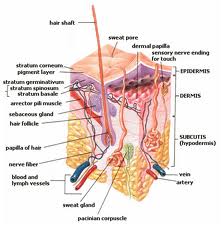 The integumentary system is made up of three layers:the outermost epidermis,the dermis,and the
hypodermis.
The epidermis is typically 10 to 30 cells thick;its main function is to provide a waterproof
layer.
Its outermost cells are constantly lost;its bottommost cells are constantly dividing and pushing
upward.
The middle layer,the dermis,is 15 to 40 times thicker than the epidermis.
The dermis is made up of many components such as bony structures and blood vessels.
Some primates and marsupials have shades of violet,green or blue skin on parts of their bodies.
The two-toed sloth and the polar bear sometimes appear to have green fur but this color is caused
by algae growths.
The integumentary system is made up of three layers:the outermost epidermis,the dermis,and the
hypodermis.
The epidermis is typically 10 to 30 cells thick;its main function is to provide a waterproof
layer.
Its outermost cells are constantly lost;its bottommost cells are constantly dividing and pushing
upward.
The middle layer,the dermis,is 15 to 40 times thicker than the epidermis.
The dermis is made up of many components such as bony structures and blood vessels.
Some primates and marsupials have shades of violet,green or blue skin on parts of their bodies.
The two-toed sloth and the polar bear sometimes appear to have green fur but this color is caused
by algae growths.
REPRODUCTIVE SYSTEM
The integumentary system is made up of three layers:the outermost epidermis,the dermis and the
hypodermis.
Most mammals are viviparous,giving birth to live young.
However,the five species ofmonotreme,the platypuses and the echidnas,lay eggs.
The young lick the milk from a mammary patch on the mother's belly.
Viviparous mammals are in the subclass Theria;those living today are in the marsupial and
placental infraclasses.
The placentals give birth to complete and fully developed young,usually after long gestation
periods.
ENDOTHERMY
Nearly all mammals are endothermic ("warm-blooded").
Most mammals also have hair to help keep them warm.
Like birds,mammals can forage or hunt in weather and climates too cold for nonavian reptiles and
large insects.
Endothermy requires plenty of food energy,so mammals eat more food per unit of body weight than
most reptiles.
Small insectivorous mammals eat prodigious amounts for their size.
Birds are also endothermic,so endothermy is not a defining mammalian feature.
INTELLIGENCE
In intelligent mammals such as primates,the cerebrum is larger relative to the rest of the
brain.
Intelligence itself is not easy to define but indications of intelligence include the ability to
learn,matched with behavioral flexibility.
Rats,for example,are considered to be highly intelligent,as they can learn and perform new tasks,
an ability that may be important when they first colonize a fresh habitat.
In some mammals,food gathering appears to be related to intelligence:
a deer feeding on plants has a brain smaller than a cat,which must think to outwit its prey.
FEEDING
To maintain a high constant body temperature is energy expensive – mammals therefore need a
nutritious and plentiful diet.
The only large insectivorous mammals are those that feed on huge colonies of insects (ants or
termites).
Specializations in herbivory include:
Granivory "seed eating"
folivory "leaf eating"
frugivory "fruit eating"
nectivory "nectar eating"
gumivory "gum eating"
and mycophagy "fungus eating"
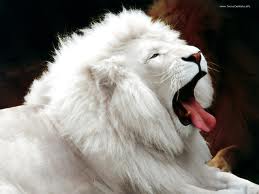


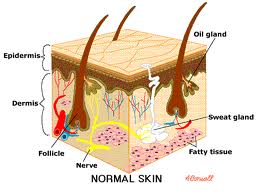



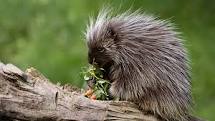
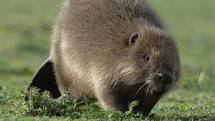

 and Soricomorpha (shrews,moles and solenodons).
and Soricomorpha (shrews,moles and solenodons).
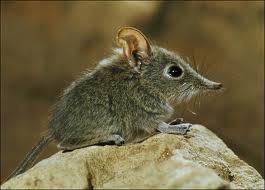
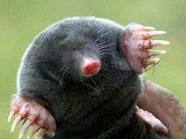
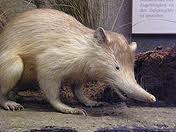
 and the Carnivora (dogs,cats,weasels,bears,seals and their relatives).
and the Carnivora (dogs,cats,weasels,bears,seals and their relatives).



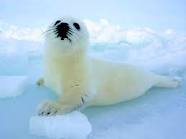
 Middle ear:
Middle ear:
 Sound is carried from the eardrum by a chain of three bones,the malleus,the incus and the
stapes.
Ancestrally,the malleus and the incus are derived from the articular and the quadrate bones that
constituted the jaw joint of early therapsids.
Tooth replacement:
Sound is carried from the eardrum by a chain of three bones,the malleus,the incus and the
stapes.
Ancestrally,the malleus and the incus are derived from the articular and the quadrate bones that
constituted the jaw joint of early therapsids.
Tooth replacement:
 Teeth are replaced once or (as in toothed whales and murid rodents) not at all,rather than being
replaced continually throughout life.
Prismatic enamel:
The enamel coating on the surface of a tooth consists of prisms,solid,rod-like structures
extending from thedentin to the tooth's surface.
Teeth are replaced once or (as in toothed whales and murid rodents) not at all,rather than being
replaced continually throughout life.
Prismatic enamel:
The enamel coating on the surface of a tooth consists of prisms,solid,rod-like structures
extending from thedentin to the tooth's surface.
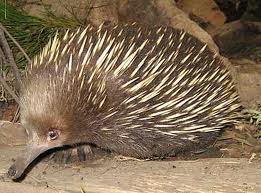
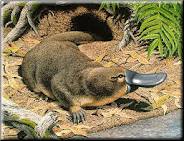
 Infraclass †Triconodonta:
triconodonts
Infraclass †Triconodonta:
triconodonts
 Magnorder Australidelphia:
Australian marsupials and the monito del monte
Magnorder Ameridelphia:
New World marsupials
Cohort Placentalia:
placentals
Magnorder Australidelphia:
Australian marsupials and the monito del monte
Magnorder Ameridelphia:
New World marsupials
Cohort Placentalia:
placentals
 Magnorder Xenarthra:
xenarthrans
Magnorder Xenarthra:
xenarthrans
 Magnorder Epitheria:
epitheres
Grandorder Anagalida:
lagomorphs,rodents and elephant shrews
Magnorder Epitheria:
epitheres
Grandorder Anagalida:
lagomorphs,rodents and elephant shrews
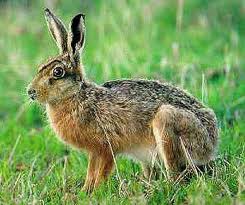



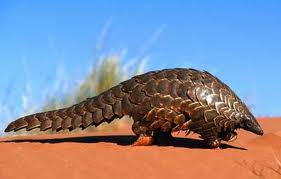
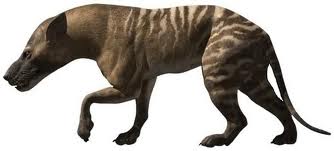
 Grandorder Archonta:
bats,primates,colugos and treeshrews
Grandorder Archonta:
bats,primates,colugos and treeshrews
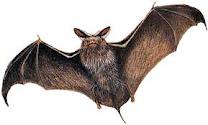
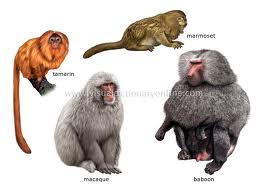


 Order Tubulidentata incertae sedis:
aardvark
Order Tubulidentata incertae sedis:
aardvark
 Mirorder Eparctocyona:
†condylarths,whales and artiodactyls (even-toed ungulates)
Mirorder Eparctocyona:
†condylarths,whales and artiodactyls (even-toed ungulates)
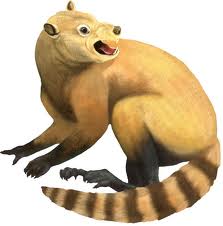

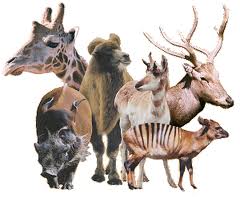
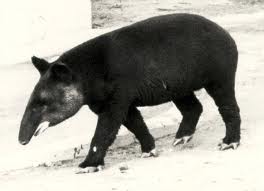


 Order Afrosoricida:
tenrecs and golden moles (Africa)
Order Afrosoricida:
tenrecs and golden moles (Africa)
 Order Tubulidentata:
aardvark (Africa south of the Sahara)
Order Tubulidentata:
aardvark (Africa south of the Sahara)
 Clade Paenungulata
Order Hyracoidea:
hyraxes or dassies (Africa,Arabia)
Clade Paenungulata
Order Hyracoidea:
hyraxes or dassies (Africa,Arabia)
 Order Proboscidea:
elephants (Africa,Southeast Asia)
Order Proboscidea:
elephants (Africa,Southeast Asia)
 Order Sirenia:
dugong and manatees (cosmopolitan tropical)
Order Sirenia:
dugong and manatees (cosmopolitan tropical)

 Order Cingulata:
armadillos (Americas)
Clade Boreoeutheria
Order Cingulata:
armadillos (Americas)
Clade Boreoeutheria
 Order Dermoptera:
flying lemurs or colugos (Southeast Asia)
Order Dermoptera:
flying lemurs or colugos (Southeast Asia)
 Order Primates:
lemurs,bushbabies,monkeys,apes,human (cosmopolitan)
Order Primates:
lemurs,bushbabies,monkeys,apes,human (cosmopolitan)
 Superorder Glires
Order Lagomorpha:
pikas,rabbits,hares (Eurasia,Africa,Americas)
Superorder Glires
Order Lagomorpha:
pikas,rabbits,hares (Eurasia,Africa,Americas)
 Order Rodentia:
rodents (cosmopolitan)
Order Rodentia:
rodents (cosmopolitan)



 Order Artiodactyla:
even-toed ungulates,including pigs,hippopotamus,camels,giraffe,deer,antelope,cattle,sheep,goats
Order Artiodactyla:
even-toed ungulates,including pigs,hippopotamus,camels,giraffe,deer,antelope,cattle,sheep,goats
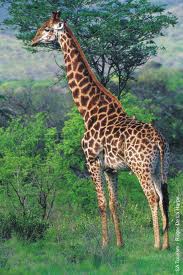
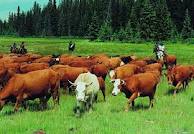
 Clade Ferae
Order Pholidota:
pangolins or scaly anteaters (Africa,South Asia)
Order Carnivora:
carnivores (cosmopolitan),including cats and dogs
Clade Ferae
Order Pholidota:
pangolins or scaly anteaters (Africa,South Asia)
Order Carnivora:
carnivores (cosmopolitan),including cats and dogs


 The lungs of mammals have a spongy texture and are honeycombed with epithelium having a much
larger surface area in total than the outer surface area of the lung itself.
The lungs of humans are typical of this type of lung.
This type of lung is known as a bellows lung as it resembles a blacksmith's bellows.
Mammals take oxygen into their lungs and discard carbon dioxide.
The lungs of mammals have a spongy texture and are honeycombed with epithelium having a much
larger surface area in total than the outer surface area of the lung itself.
The lungs of humans are typical of this type of lung.
This type of lung is known as a bellows lung as it resembles a blacksmith's bellows.
Mammals take oxygen into their lungs and discard carbon dioxide.
 All mammalian brains possess a neocortex,a brain region unique to mammals.
Placental mammals have a corpus callosum, unlike monotremes and marsupials.
The size and number of cortical areas (Brodmann's areas) is least in monotremes (about 8-10) and
most in placentals (up to 50).
All mammalian brains possess a neocortex,a brain region unique to mammals.
Placental mammals have a corpus callosum, unlike monotremes and marsupials.
The size and number of cortical areas (Brodmann's areas) is least in monotremes (about 8-10) and
most in placentals (up to 50).
 The integumentary system is made up of three layers:the outermost epidermis,the dermis,and the
hypodermis.
The epidermis is typically 10 to 30 cells thick;its main function is to provide a waterproof
layer.
Its outermost cells are constantly lost;its bottommost cells are constantly dividing and pushing
upward.
The middle layer,the dermis,is 15 to 40 times thicker than the epidermis.
The dermis is made up of many components such as bony structures and blood vessels.
Some primates and marsupials have shades of violet,green or blue skin on parts of their bodies.
The two-toed sloth and the polar bear sometimes appear to have green fur but this color is caused
by algae growths.
The integumentary system is made up of three layers:the outermost epidermis,the dermis,and the
hypodermis.
The epidermis is typically 10 to 30 cells thick;its main function is to provide a waterproof
layer.
Its outermost cells are constantly lost;its bottommost cells are constantly dividing and pushing
upward.
The middle layer,the dermis,is 15 to 40 times thicker than the epidermis.
The dermis is made up of many components such as bony structures and blood vessels.
Some primates and marsupials have shades of violet,green or blue skin on parts of their bodies.
The two-toed sloth and the polar bear sometimes appear to have green fur but this color is caused
by algae growths.